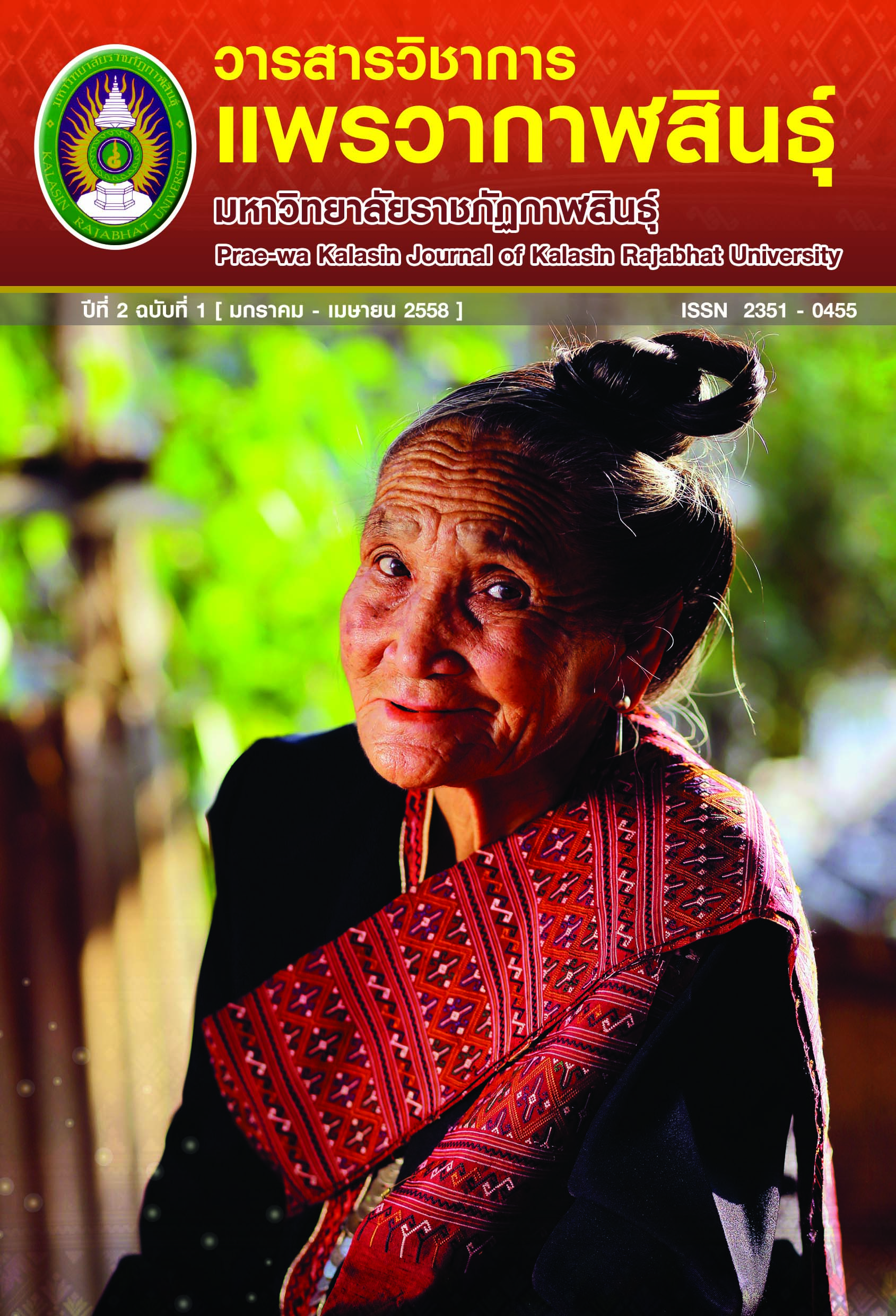Dhammada Sorn Loke : The Cultural Semiotic Combination between Buddhism and Local Belief
Main Article Content
Abstract
บทความนี้พบสิ่งที่ปรากฏในวรรณกรรมธรรมดาสอนโลกอันเด่นชัดคือ “พุทธศาสนาแบบชาวบ้าน” มีลักษณะการผสมผสานกับหลักความเชื่อดั้งเดิมกับหลักศาสนาหากมองผิวเผินเราอาจเห็นเป็นเนื้อเดียวกัน แต่เมื่อจำแนกแยกย่อยกลับพบความแตกต่าง ขัดแย้งและต่างที่มาผู้เขียนได้ใช้วิธีศึกษาโดยการจำแนกผ่านโครงเรื่องย่อและจำแนกผ่านคำประพันธ์ เพื่อหาคำศัพท์ทางสัญญะที่ปรากฏ ซึ่งพบว่า โครงเรื่องวรรณกรรมมีการร้อยเชื่อมเรื่องราวในแต่ละบทเข้าด้วยกันแยกเป็นสัญญะทางศาสนาพบว่ามีการนำเอาบางเรื่องราวบางบุคคลบางเหตุการณ์มากล่าวจะสลับด้วยเรื่องราวเหตุการณ์ทางความเชื่อดั้งเดิมของท้องถิ่นผู้เขียนพบว่ามีข้อขัดแย้งในหลักเหตุผลอยู่ในบางบั้น/กรณี ซึ่งนำไปสู่การตีความ เช่น ในบั้นที่ 3 “บั้นพระราชาม้าง (ทำลาย) คองเฒ่า” เป็นตัวอย่างหนึ่งทำให้เห็นจุดขัดแย้งเล็กๆ ที่ยังไม่ลงตัวระหว่างความเชื่อดั้งเดิมและศาสนาผู้มาใหม่ เพราะกล่าวเริ่มต้นด้วยความศรัทธาต่อศาสนาอย่างแรงกล้าของกษัตริย์ แต่เนื่องจากองค์อำนาจขาดความประนีประนอม ศรัทธาอย่างสุดโต่ง ละเลยเคารพบริบททางความเชื่อสังคมดั้งเดิม บ้านเมืองจึงต้องจบลงด้วยโศกนาฏกรรม ในบั้นนี้กลับกลายว่าอำนาจความเชื่อดั้งเดิมกลับยังมีอิทธิพลอยู่และพุทธศาสนาซึ่งถูกสถาปนาขึ้นใหม่โดยผ่านระบบการเมืองการปกครองแบบสมบูรณาญาสิทธิราชย์ (Absolute Monarchy) ยังไม่ได้ถูกยอมรับจากผู้ใต้ปกครอง แม้ว่ากษัตริย์จะมีอำนาจในการปกครองแผ่นดินและพลเมืองโดยอิสระ โดยไม่มีกฎหมายหรือองค์กรตามกฎหมายใดๆ จะห้ามปรามได้ก็ตาม
This article presents the authors perspective on “Local Buddhism”, the most semiotic phenomena in Dhammada Sorn Loke, which is likely a compilation of old beliefs. On the surface, it might appear that these old beliefs are universal and appear as the same old story composed of different contents and backgrounds. With that premise in mind, the researcher studied the contents by classifying their plots and word composition to identify the cultural semiotic. It was found that this literary work was composed of different chapters that were meaningfully connected to one another. After the chapters had been classified by their cultural semiotic, it was surprisingly revealed that they exemplified the stories of people’s lives. The researcher further discovered that there is a causal conflict in some chapters/cases which requires further study. As an example, in chapter 3, or “Pra Raja Mang Krong Tao”, there is indication of a conflict between local beliefs and religion. The king haduncom promising rigid religious convictions which seemed to rule out any recognition of the old traditions. The resulting conflict ended in tragedy. The story proves that the practice of old traditions isstillvery powerful even though religion was later established through anabsolute monarchy system. Religious practices are unacceptable for people in the city where no rule has been reinforced to control them.
Article Details
Section
Articles (บทความ)

